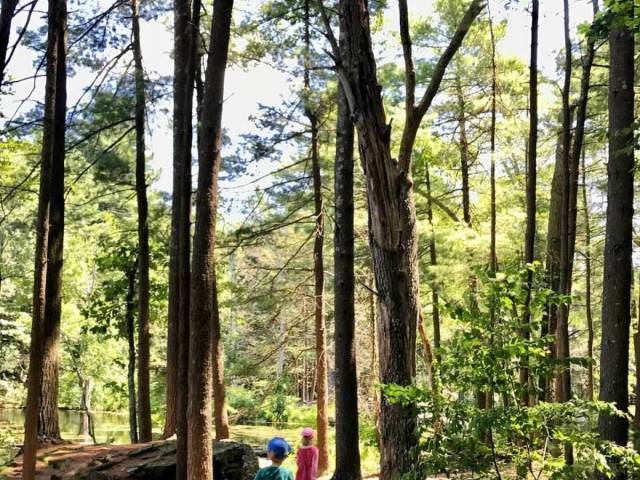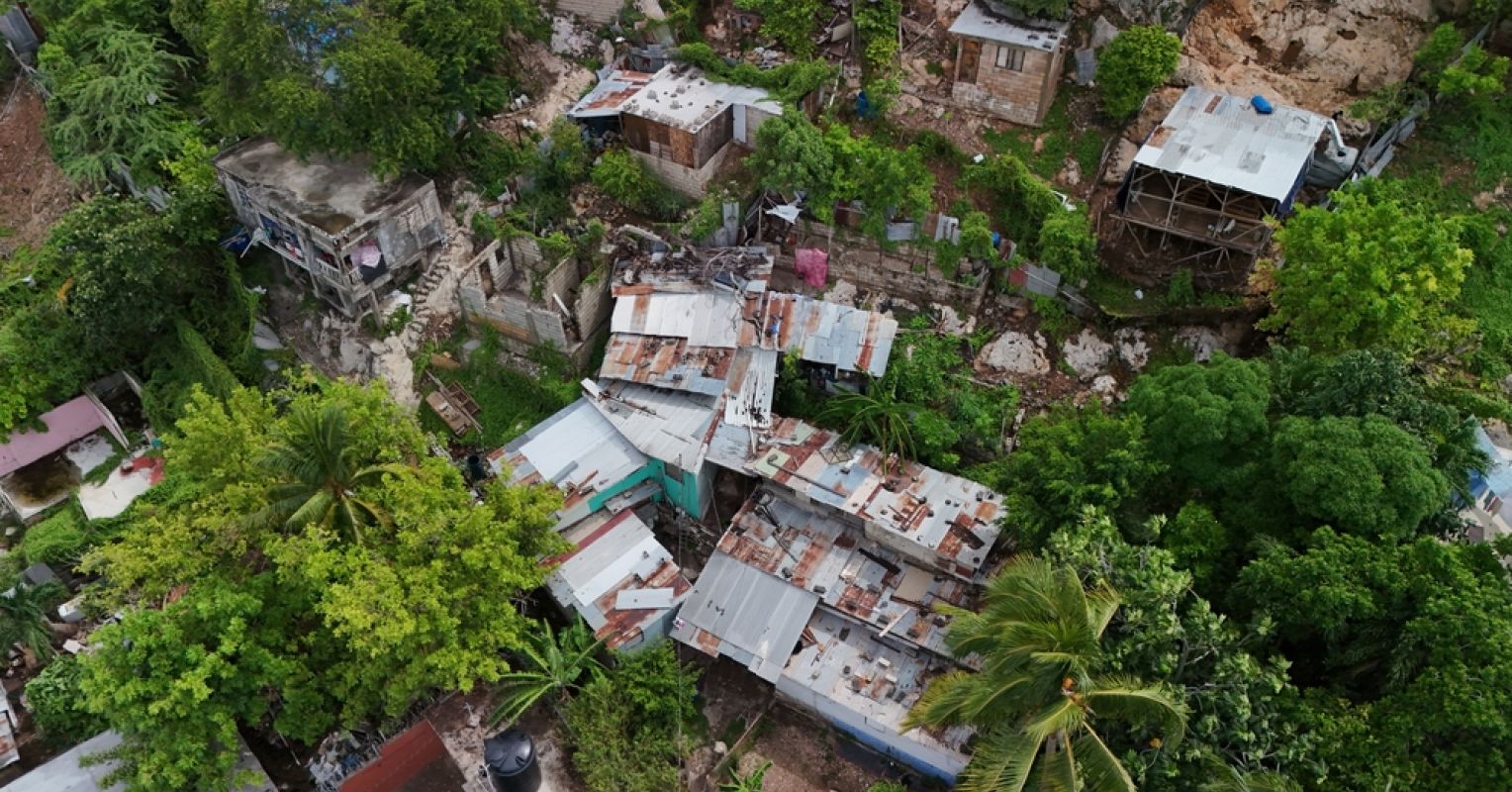Awe doesn’t often make the headlines. But on April 9, 2024, the front page of the New York Times read, “A Divided America Agrees on One Thing: The Eclipse Was Awesome.”
All photos by Deborah Farmer Kris of her children in nature
Though our town was about three hours south of the path of totality, a celebratory atmosphere permeated the community. One of my kids spent the afternoon constructing a moveable 3D eclipse model, while the other built a pinhole camera. Many schools dismissed early so kids could make it home in time. Libraries and community groups hosted watch parties.
My family kept it simple and put out lawn chairs and blankets in the front yard. Neighbors wandered over to join us, and a gaggle of kids climbed our Japanese maple tree to get closer to the sun. The birds went silent as we put on our glasses and craned our necks toward the sky.
X

As the New York Times reported, “For this moment, a wide swath of this country did the same thing, together, happily and in wonder. Our world of divisions and distractions—of TikTok and politics and disasters—fell away, leaving us quiet with our breath held in awe.”
Collective awe on this scale is a rare, newsworthy event. But sometimes we forget that awe can be an everyday emotion, too—something we feel as regularly as happiness, sadness, fear, and anger. And that’s good news because awe has been linked to a host of benefits. The question is this: How can we tap into this wonder more intentionally?
Becoming an awe-seeker
I have spent 25 years invested in one question: How do we help kids thrive? This question has animated my work as a teacher, education journalist, parent educator, and mom to two awesome kids.
In fall of 2021, I stumbled upon a 45-page white paper called The Science of Awe from the Greater Good Science Center at the University of California, Berkeley. The paper summarizes 15 years of research, much of it research from the Center’s founding director, Dacher Keltner.
As I read the report, I got goosebumps—not something I had experienced enough as we slogged through the pandemic. I remember how the light filtered in through the office window that afternoon. My brain whirred, connecting the findings on awe with decades of child development research. I laughed, scribbled notes, and texted the paper to a dozen friends and colleagues. I was awestruck.
Since that afternoon, I have been fully invested in the study of this often-overlooked emotion. As I wrote Raising Awe-Seekers: How the Science of Wonder Helps Kids Thrive, I pushed myself to stay honest and open: “That’s a fascinating piece of research, Deborah. Now what? What does this mean for you?”
Take the research on spending time outside. Nature is perhaps the most obvious source of awe: vibrant sunsets, crashing waves, and streets lined with cherry blossoms. The documented benefits of getting outside for kids of all ages are legion. Time in nature supports cognitive development, stress reduction, creativity, focus, mental and physical health, social skills, gross motor skills, and environmental awareness. As Keltner writes, “It is hard to imagine a single thing you can do that is better for your body and mind than finding awe outdoors.”
For example, researchers at the Medical College of Wisconsin found that “higher levels of neighborhood green space were associated with significantly lower levels of symptomatology for depression, anxiety, and stress,” after controlling for a wide range of factors. They concluded that “greening up” our neighborhoods could be a relatively low-cost, high-result “Mental health improvement.”

Similarly, a 2024 NIH study found that young children (ages two to five) who lived near dense green spaces, such as parks or forests, had fewer symptoms of anxiety and depression. According to the lead scientist, “Our research supports existing evidence that being in nature is good for kids. It also suggests that the early childhood years are a crucial time for exposure to green spaces.”
I love the concept of nature as a buffer. Nature might not protect our kids from challenges, but perhaps the awe they experience in it can build a protective barrier, improving their Mental health and helping them to navigate life a bit more easily.
One hour in the woods
It’s one thing to know the research, but it’s another thing entirely to apply it. This is the inherent tension that comes with writing a parenting book about awe or any other topic: To what extent do I practice what I preach? How am I shifting my personal habits in response to new learning? When it comes to nature: What do my kids observe about my relationship with the outdoors? Do they see my eyes light up when the neighborhood magnolias bloom, or do they see me checking my phone as I walk the dog?

Raising Awe-Seekers: How the Science of Wonder Helps Kids Thrive (Free Spirit Publishing, 2025, 240 pages).
These questions were on my mind on a sunny November afternoon in Natick, Massachusetts. I was visiting a Montessori school to shadow a nature class, to see how a group of six to eight year olds would respond to spending an hour in the woods in the middle of their school day. As we waited for the kids to arrive, Ms. Janey, the nature teacher, told me she used to make her classes too complicated. These days, her core approach is simple: “Stop and listen. What do you hear? Stop and look. What do you see?’”
When the students arrived, Ms. Janey reminded the kids that they would spend the first 10 minutes of forest time in their “sit spot.”
“What do you do first when you find your sit spot?” she asked.
“You touch the ground with your hands and take three deep breaths,” a third-grader answered.
“Then what?”
“You listen, look, see, smell, and . . . I can’t remember the last one,” a first-grader offered.
“Taste!” a second-grader said. “But, like, just taste the air—don’t lick a tree!” Giggles.
Each student grabbed a small mat and walked into a wooded area behind the school to find a place to sit. A third-grader waved me over. He had found a spot under a giant pine.
“This has been my sit spot since I was in kindergarten,” he whispered. “I know everything about this tree.” His delight reminded me of Maria Montessori’s words: “There is no description, no image in any book that is capable of replacing the sight of real trees, and all the life to be found around them, in a real forest. Something emanates from those trees which speaks to the soul, something no book, no museum is capable of giving.”

I found my own spot to settle down and observe. A couple kids used sticks to draw in the dirt. Many sat quietly and looked around. One swung his arms around and around. Another traced her fingers along the cracks in the tree bark.
No one talked or looked bored. I began to wonder: When was the last time I simply sat beneath a tree without my earbuds and phone, with no purpose but to be present with nature?
After 10 minutes, the teacher called the students to her with a bird-like whistle and introduced the lesson of the day. “In pairs, trace a square foot on the forest floor. Then make a list of everything you see in your square foot.”
I joined a first-grader and the pine-tree–loving third-grader. “Let’s find a square that includes a dead log,” he suggested. “Dead logs are full of cool stuff.”
They marked the boundary and began their list: pine needles, a centipede, a grub. Then they lifted up a large leaf. “OMG! This is amazing!” the third grader exclaimed. “A frog! Right here! I was so right about the log.”
I was startled to hear the teacher announce that class was ending. “It’s never enough time,” Ms. Janey told me. “We could spend all day out here.”
It’s important to note that this “forest” is only a couple of acres. Barely enough to catch the eye of a passerby. Yet the sensory difference between sitting inside at my computer and sitting in that pine grove was palpable. That hour in nature was transportive.
Parenting for awe
As we walked back to the school, my new friend—the one who had spent four years sitting under the same tree—said to me, “Thanks for spending time with us. The forest is pretty awesome, isn’t it?”

Yes, but my awe that afternoon was not simply from nature. It also came from watching the kids’ wide eyes and squeals of excitement. They reminded me that young children often do more to pull their parents toward nature than the other way around.
Almost everything is fresh to a five year old: the dandelion growing through the sidewalk crack or the swarm of ants dismantling a dropped cracker. Nature is a sensory feast for kids who largely make sense of the world through their five senses—kids who have not yet become accustomed to living in their heads.
I remembered those long summer evenings when my kids were preschoolers—when they wanted just “five more minutes” to dig in the dirt, blow on dandelions, hunt for four-leaf clovers, or lick popsicles on the stoop as the sun set. Now that I am the parent of adolescents, we have to be more deliberate about making time to slow down and get outside.
Last week, my son and I went on our first spring bike ride. “I forgot how good it feels to feel the wind in my face,” he told me. This weekend, the first magnolia trees bloomed in Boston. As I drove my eighth-grade daughter to an art class at the museum, I called out, “Tree!” every time I saw one in bloom. She turned to her friend in the car and said, “My mom gets really excited about trees and birds” without a trace of embarrassment. And in my mind I thought, “I love that she knows that about me.”
Researching nature and awe has, unexpectedly, made me less concerned about getting my kids outside for a certain number of minutes each day. There are just so many “shoulds” as parents that everything can start to feel like a quota system. I’m more interested in showing them that clapping in delight over lightning bugs isn’t just for kids. I want them to see, through example, that our connection to nature can deepen and change as we move through childhood and into adolescence and adulthood.
Have you forgotten what it feels like to blow on a dandelion? It’s never too late to remember. Because those wide-eyed goosebump moments that come from awe? Those are good for adults, too.













